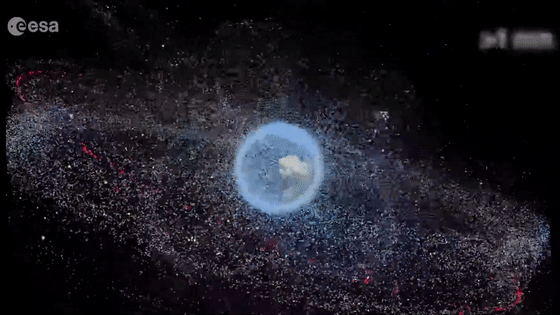The study shows that there could be over 1,000,000 satellites in low Earth orbit, with many more on the way. This can lead to problems with orbital congestion and collisions
New research indicates that Earth’s orbit is already crowded with tens of thousands of satellites and could be overwhelmed with even more shortly, highlighting the need for strict laws governing the use of shared orbital space.
Experts believe that over a million satellites will soon be launched into low Earth orbit. To arrive at this estimate, the researchers examined recent applications in the database of the International Telecommunications Union (ITU), which is responsible for providing orbital space for satellite use.
To launch and operate a population of satellites, states are required to provide relevant information to the MTS. Records show that countries around the world have collectively proposed to launch over a million satellites spread across 300 “mega-constellations,” which are huge networks of satellites working together to provide Internet services.

The proposed number of satellites is 115 times the number of operational satellites currently orbiting the Earth, according to a new study.
“If even a fraction of those million satellites are launched, international regulations will be needed to address associated impacts, such as collision risk, light pollution, and end-of-life risks,” said Andrew Falle, a researcher at the University of British Columbia’s External Space Institute and chief author of the new study.
1,000,000 satellites in orbit threaten further unimpeded launches
Applications in the MTS database between 2017 and 2022 show countries applying for satellite constellations much larger than SpaceX’s Starlink, which still has the largest mega-constellation of satellites in space, numbering nearly 5,000, and in There are even more plans to launch.
The largest number of components – 337,320 – are currently registered in the Cinnamon-937 constellation of Rwanda. When Falle and his team noticed this application, they began looking at others. They continued to find similar, numerous applications from companies around the world, including China, Germany, Spain, Norway, France, and the Solomon Islands.
“It wasn’t just the big numbers that interested us. The more we looked into the issues surrounding these groups, the more we saw that it would be difficult for MTS to deal with them,” said Ivan Wright, a graduate student at the University of British Columbia and co-author of the new study.
The new analysis also raises a larger issue: the large number of applications in the MTS database may indicate that states or companies are applying for orbital space for many more satellites than they intend to launch. The reason is partly to take advantage of different rules in different countries and minimize scrutiny: companies appear to be applying for the same grouping through different states. For example, Norway, Germany, and the United States have registered licenses for SpaceX, while OneWeb applications have also been registered in the UK, France, and Mexico.
On October 11, SpaceX first applied MTS through the Kingdom of Tonga for a constellation of 29,988 satellites. Most planned satellites may never be launched due to funding problems, changes in political support, or problems with engineering or technology.
However, the presence of “excess” applications is a serious warning that companies are creating security and sustainability problems in their use of seemingly unlimited orbital space. At least one important opportunity to highlight the issue is this year’s World Radiocommunication Conference, which will take place in Dubai at the end of November, the researchers say. 193 member states of the International Telecommunications Union will be represented there.
To address growing problems with congested orbital space, MTS in 2019 introduced rules for satellite constellations that companies must comply with to retain their rights to orbital spots. The rules require companies to launch 10% of their satellite constellation within two years of the first satellite’s launch, half within 5 years, and the full complement by the 7th year.



